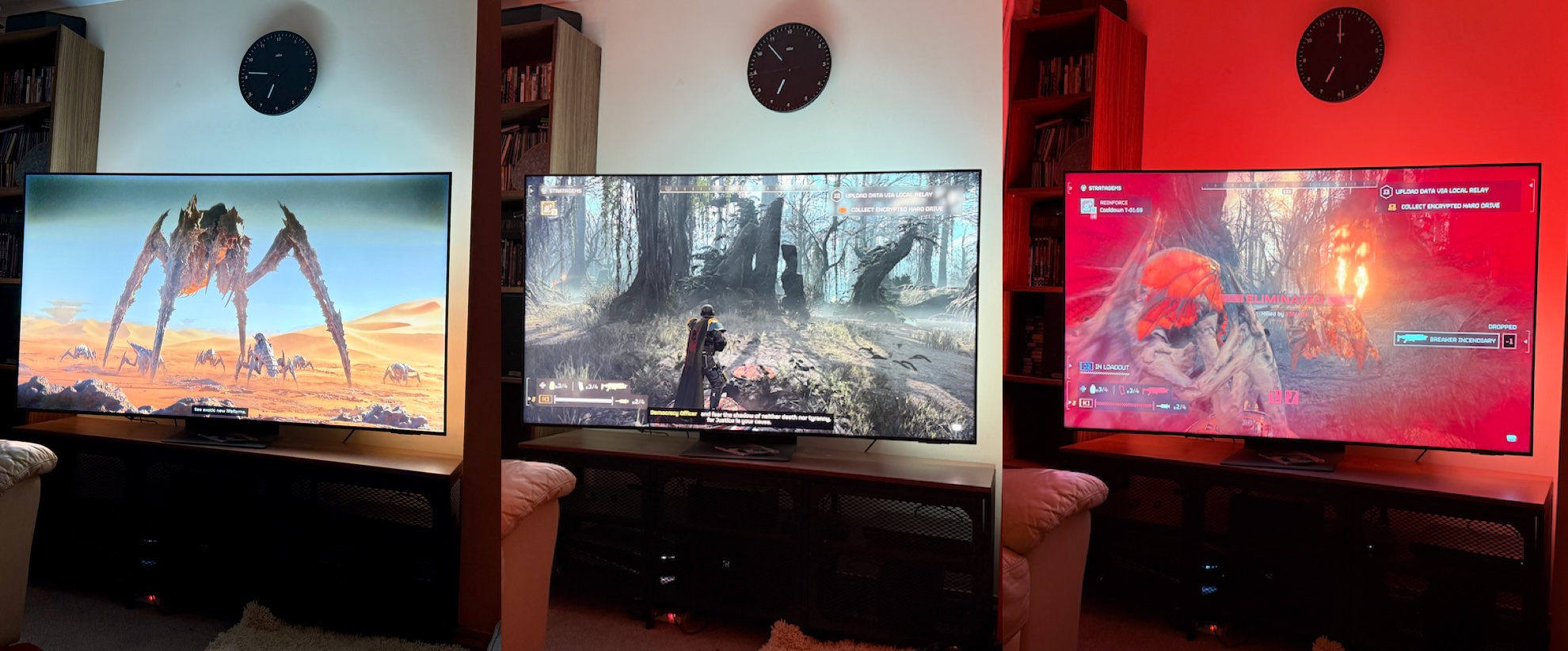TechRadar Verdict
The Hue Play HDMI Sync Box 8K makes any TV feel massive, and this version is particularly good for gamers thanks to its four HDMI 2.1 ports. It's easy to use, very customizable and delivers a very smooth and impressive performance. But as ever with Hue, it's expensive.
Pros
- +
HDMI 2.1 on all inputs
- +
Vastly improved app
- +
Excellent performance and extensive options
Cons
- -
Very expensive
- -
Needs a Hue Bridge as well as lights
Why you can trust TechRadar
The Philips Hue Play HDMI Sync Box 8K is the second generation of the Hue entertainment product, following on from the 4K Philips Hue Play HDMI Sync Box. It’s designed to synchronize your Hue smart lighting system with the on-screen action in movies, games and with music, and it works with a wide range of different lights and lamps: simply create an entertainment area in your Hue app, add the bulbs or lights you want to sync, and the Sync Box 8K does its thing. It works very well and has an excellent app, but as ever with Hue it’s quite expensive.
The 4K version is still for sale and works fine, but if you’re using games consoles or just want to get the most future-proof option this is the one to go for even if an 8K TV is not currently in your home or on the horizon.
Philips Hue Play HDMI Sync Box 8K: price and availability
- List price $349.99 / £299.99 (about AU$520)
- More expensive than 4K Sync Box
The Philips Hue Play HDMI Sync Box 8K launched in September 2024. The UK price is £299.99 and the US price is $349.99. That’s about AU$520.
That's a slight price increase over the previous model, the Sync Box 4K, which is £229.99 / $229.
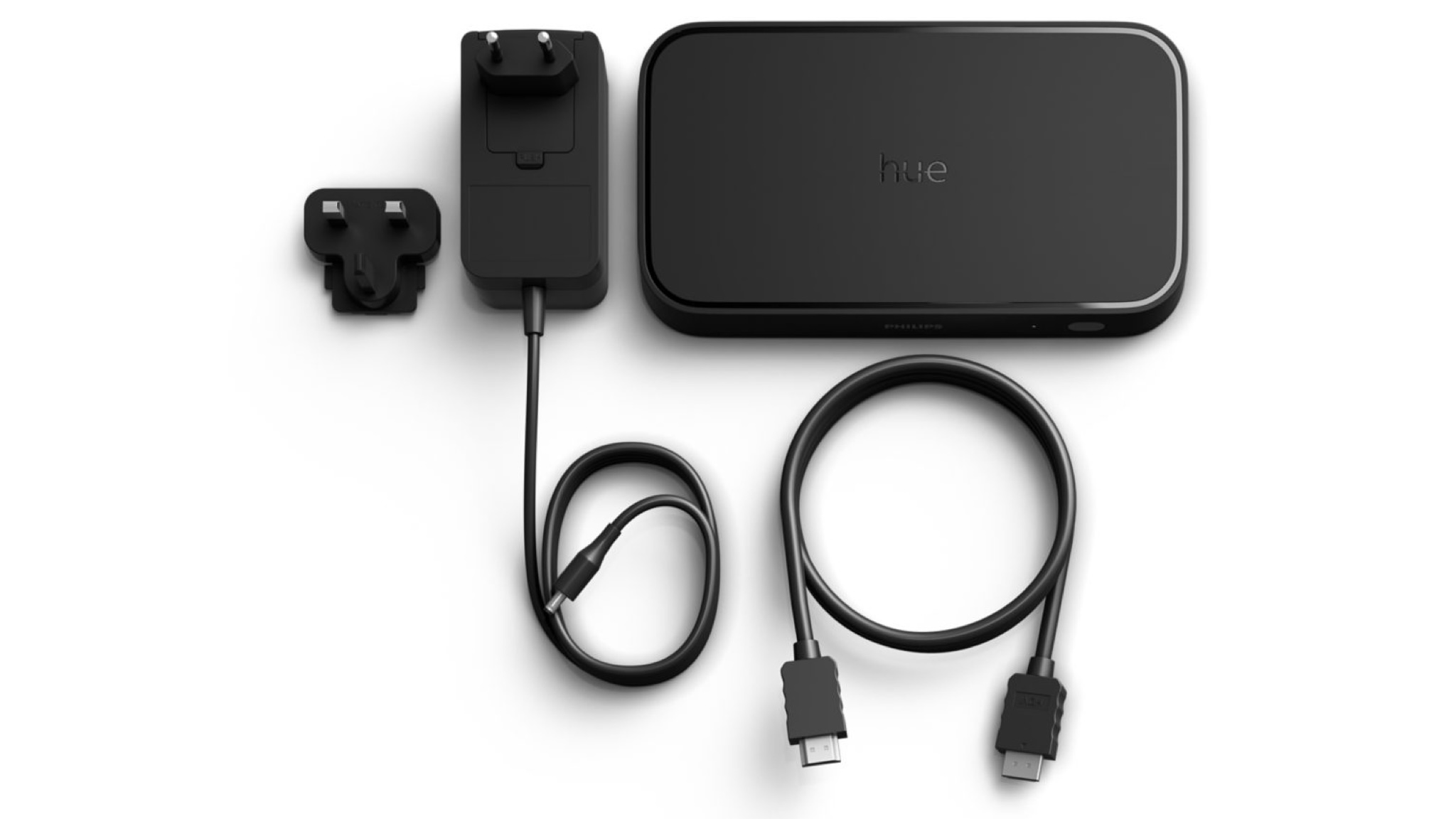
Philips Hue Play HDMI Sync Box 8K: specifications
- Very similar design to previous version
- Supports 8K at 60Hz, and 4K at 120Hz
While the Philips Hue Play HDMI Sync Box 8K looks almost identical to its predecessor bar its slightly larger dimensions, there are some key differences.
The first and most important difference is that the four HMDI ports are HDMI 2.1b with HDCP 2.3. The previous version has HDMI 2.0b with HDCP 2.2. Both versions support HDR10+, Dolby Vision and Dolby Atmos and CEC for device control.
The 4K version delivered resolutions of up to 4K at 60Hz and 1080p and 1440p at 120Hz. The new 8K model has 8K at 60Hz, a gaming console-friendly 4K at 120Hz, plus 4K/60Hz and 1080p/120Hz.
Sign up for breaking news, reviews, opinion, top tech deals, and more.
The 8K version has Bluetooth 5 compared to the Bluetooth 4.2 of the 4K box.
There are some minor changes to the power consumption too: standby power is down from 1.5W to 0.8W and maximum power consumption is down from 7.3W to 7.0W. The USB connector is now USB-C rather than micro-USB.
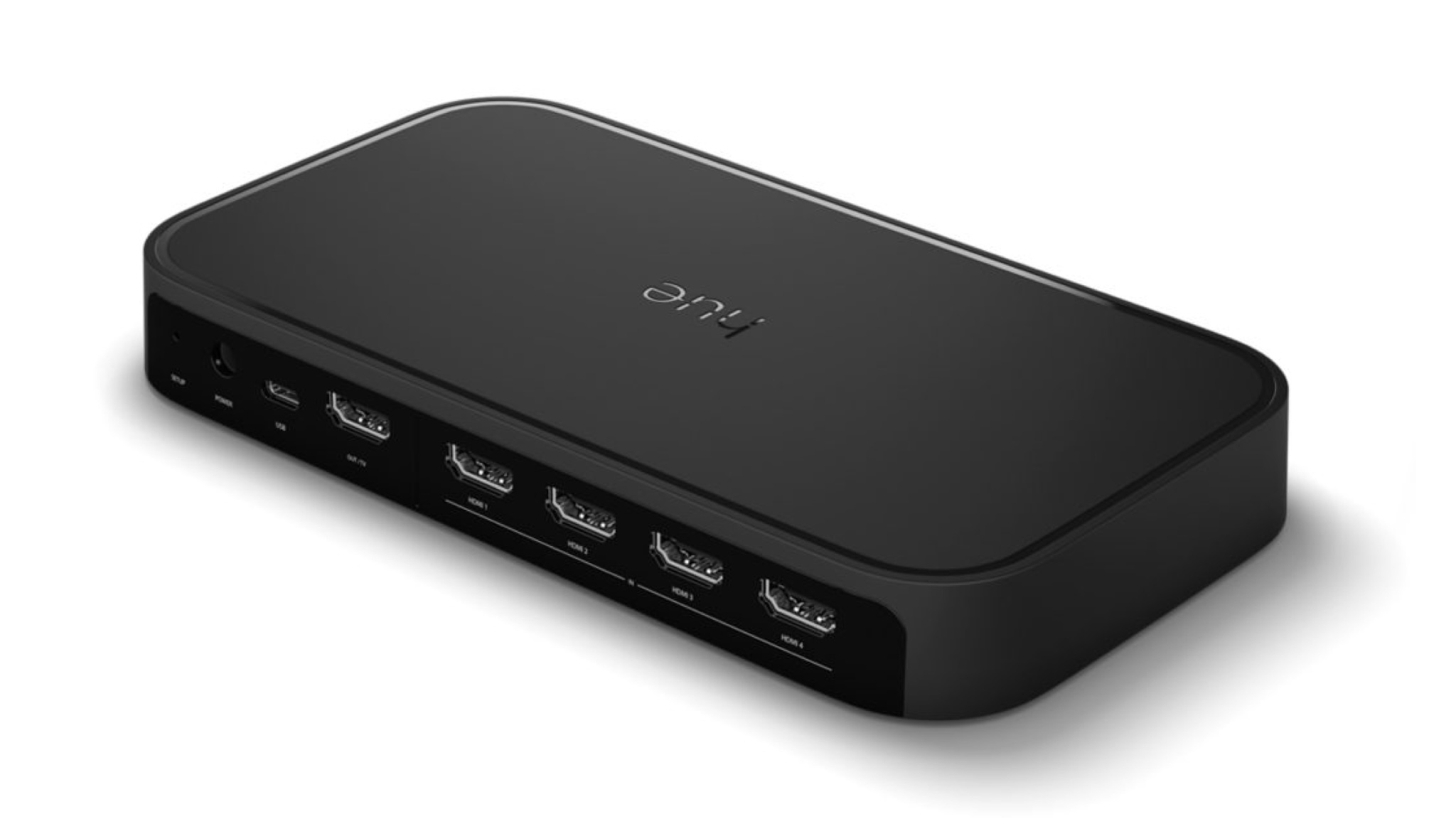
Philips Hue Play HDMI Sync Box 8K: setup
- Requires Philips Hue Bridge
- User-friendly app makes setup straightforward
As before, the Philips Hue Play HDMI Sync Box 8K requires a Hue Bridge to connect to your lights. It can only sync with audio-visual devices that are connected to its HDMI ports, which rules out the apps already installed on your TV. However, it will happily sync with apps on HDMI-connected devices such as an Apple TV 4K.
If you have a Samsung TV, you can sync your lights with your TV's apps via the Hue Sync TV app on compatible TVs. That doesn't require this sync box; your TV connects to your Hue Bridge via the app. The app is $2.99 per month in the US or £2.68 in the UK, and requires a Q60 QLED TV or a later QLED model.
You can connect your various devices directly via the HDMI ports. If you have them connected to an AV receiver, that connects to HDMI 4: that’s the HDMI port where you can enable CEC pass through so that your devices can control your TV. Whichever connection option you choose, you can set the Sync Box to detect a video signal and turn itself on automatically.
The original Sync Box required a separate Hue app, but the sync functionality is now in the core app to keep things simpler. It’s more user-friendly than before, but gives you the same options: game, movie or music modes, four levels of intensity and a brightness control. Pairing the sync box, adding it to your Wi-Fi network and checking for software updates are all handled by the app and work efficiently.
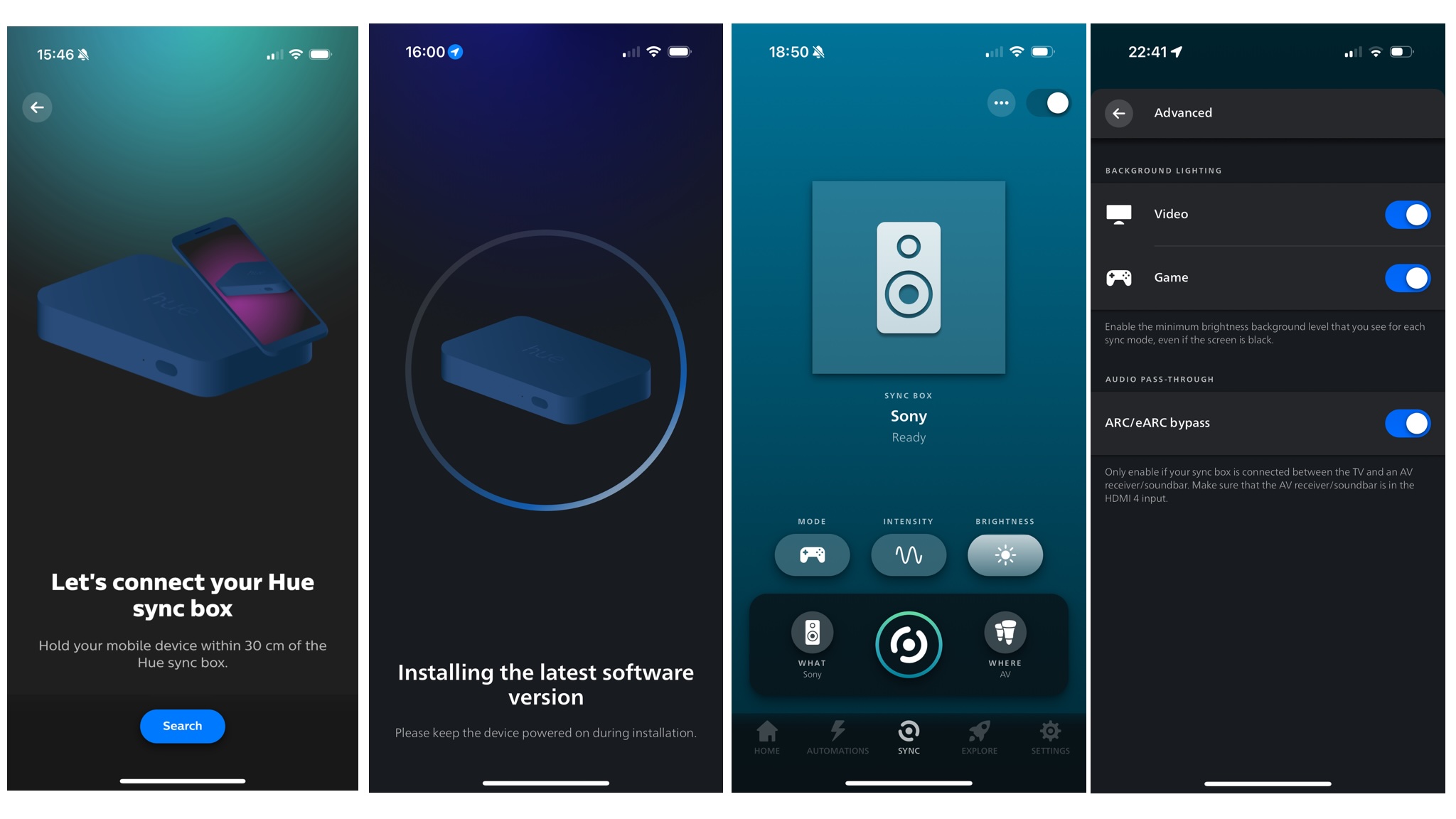
Philips Hue Play HDMI Sync Box 8K: performance
- Effectively 'expands' your TV screen when connected to smart lights
- Much better than previous version for gaming
- No noticeable lag between images on TV and lights changing
With the best smart lights, the Hue Play HDMI Sync Box 8K works exceptionally well: it’s very fast and very accurate, so for example my gradient lightstrip didn’t just blast the wall with one or two colors but a mix that followed the on-screen visuals very well. It’s best suited to lights that are in the immediate vicinity of your TV; you can have the whole room synced if you wish, but I felt it distracted from the effectiveness.
For me, the lighting was at its best when it seemed to expand my TV to the entire wall behind it and the objects and furniture on either side. It really does make your TV feel much bigger and immersive, and the response speed means it looks very natural.
I noticed a big difference in gaming, especially on PS5: the glitch that would frequently give me a black screen for a moment at the worst possible time in intense games such as Helldivers is gone, and input switching issues that previously confused my TV were absent too. If you have a PS5 or Xbox X, that alone is a big reason to go for the 8K model rather than the older one.
For me, this is one of those products that you tend to take for granted almost immediately: the effect it produces is great but you soon stop noticing it, in part because the response rate is so fast that there isn’t a lag between what you see on screen and how your lights respond. That means after a short time you only really notice it when you turn it off: the room seems awfully bare and the TV awfully small without it.
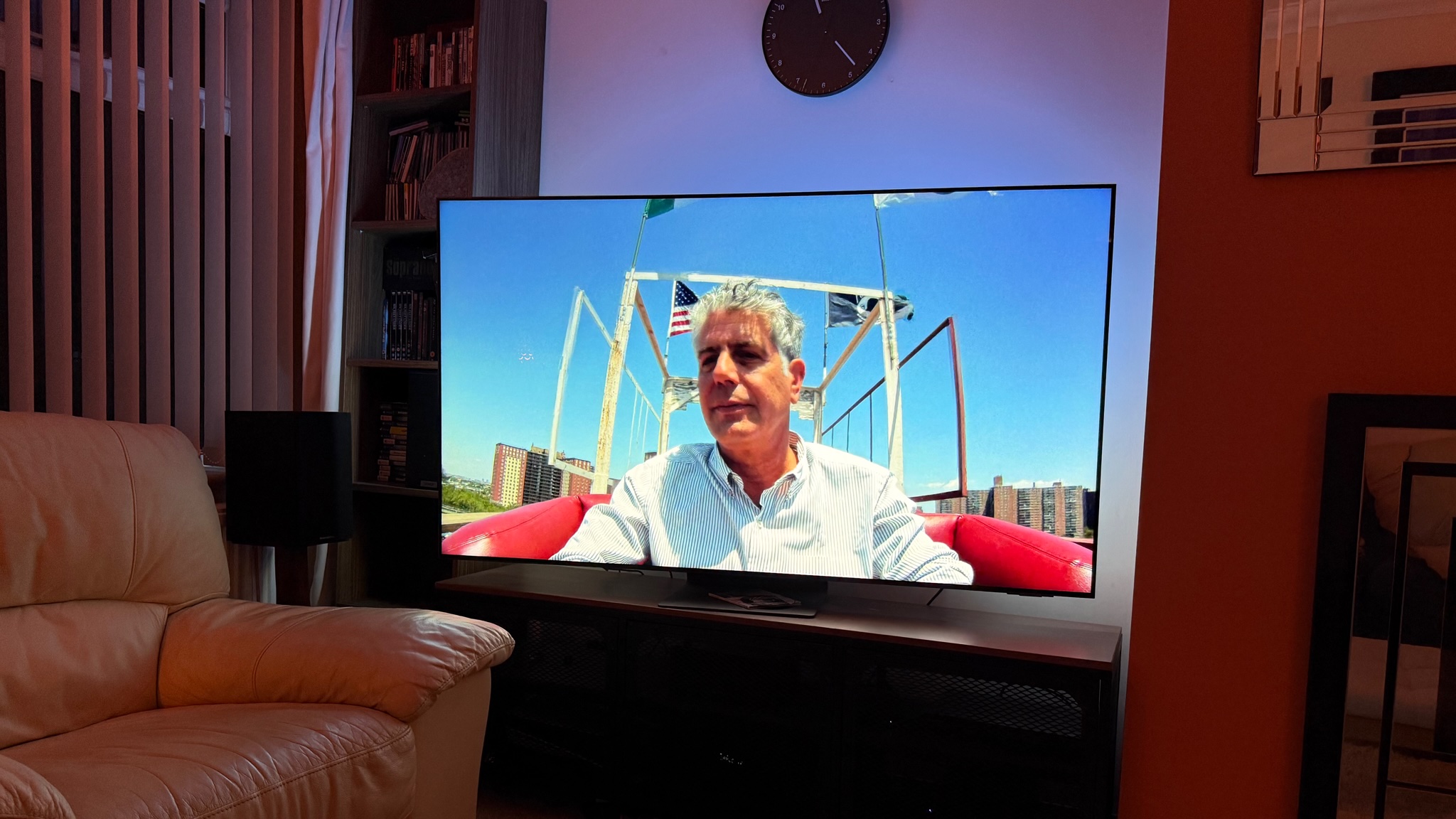
Philips Hue Play HDMI Sync Box 8K: verdict
There's no doubt that the Sync Box is expensive, even more so than its predecessor, and functionally it's not very different from the 4K box. If you're not a gamer, that's the one to go for here unless of course you have an 8K TV.
For gaming, though, this is a vast improvement: HDMI 2.1 is a must-have for modern consoles, and the upgrade addressed issues that have been annoying me for years – so while an 8K TV is not in my foreseeable future, this is still the box I'd recommend for Hue gamers.
Philips Hue Play HDMI Sync Box 8K: how I tested
I’m a long-time Hue Sync Box 4K user, so I swapped the new model with my existing one. It’s connected to a Sony AV receiver, which in turn is connected to a PS5, an Xbox Series X, an Apple TV 4K and a Sony Blu-Ray player. I used the Sync Box to control a Hue Gradient Lightstrip on the back of my Samsung TV, and also added other Hue bulbs around my living room to check the syncing worked with multiple Hue products. Read more about how we test.
First reviewed October 2024

Contributor
Writer, broadcaster, musician and kitchen gadget obsessive Carrie Marshall has been writing about tech since 1998, contributing sage advice and odd opinions to all kinds of magazines and websites as well as writing more than twenty books. Her latest, a love letter to music titled Small Town Joy, is on sale now. She is the singer in spectacularly obscure Glaswegian rock band Unquiet Mind.
